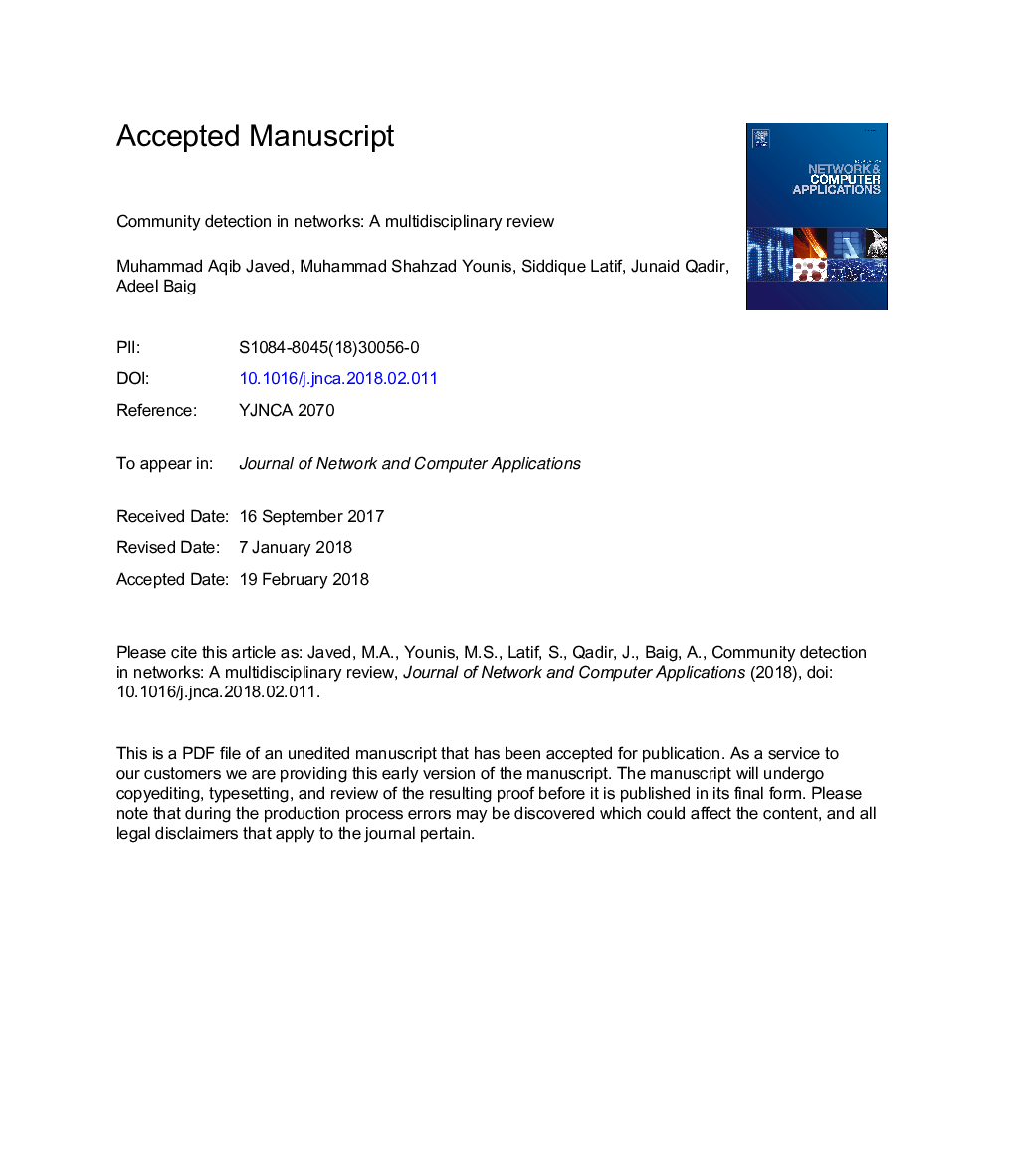| Article ID | Journal | Published Year | Pages | File Type |
|---|---|---|---|---|
| 6884798 | Journal of Network and Computer Applications | 2018 | 61 Pages |
Abstract
The modern science of networks has made significant advancement in the modeling of complex real-world systems. One of the most important features in these networks is the existence of community structure. In recent years, many community detection algorithms have been proposed to unveil the structural properties and dynamic behaviors of networks. In this study, we attempt a contemporary survey on the methods of community detection and its applications in the various domains of real life. Besides highlighting the strengths and weaknesses of each community detection approach, different aspects of algorithmic performance comparison and their testing on standard benchmarks are discussed. The challenges faced by community detection algorithms, open issues and future trends related to community detection are also postulated. The main goal of this paper is to put forth a review of prevailing community detection algorithms that range from traditional algorithms to state of the art algorithms for overlapping community detection. Algorithms based on dimensionality reduction techniques such as non-negative matrix factorization (NMF) and principal component analysis (PCA) are also focused. This study will serve as an up-to-date report on the evolution of community detection and its potential applications in various domains from real world networks.
Related Topics
Physical Sciences and Engineering
Computer Science
Computer Networks and Communications
Authors
Muhammad Aqib Javed, Muhammad Shahzad Younis, Siddique Latif, Junaid Qadir, Adeel Baig,
